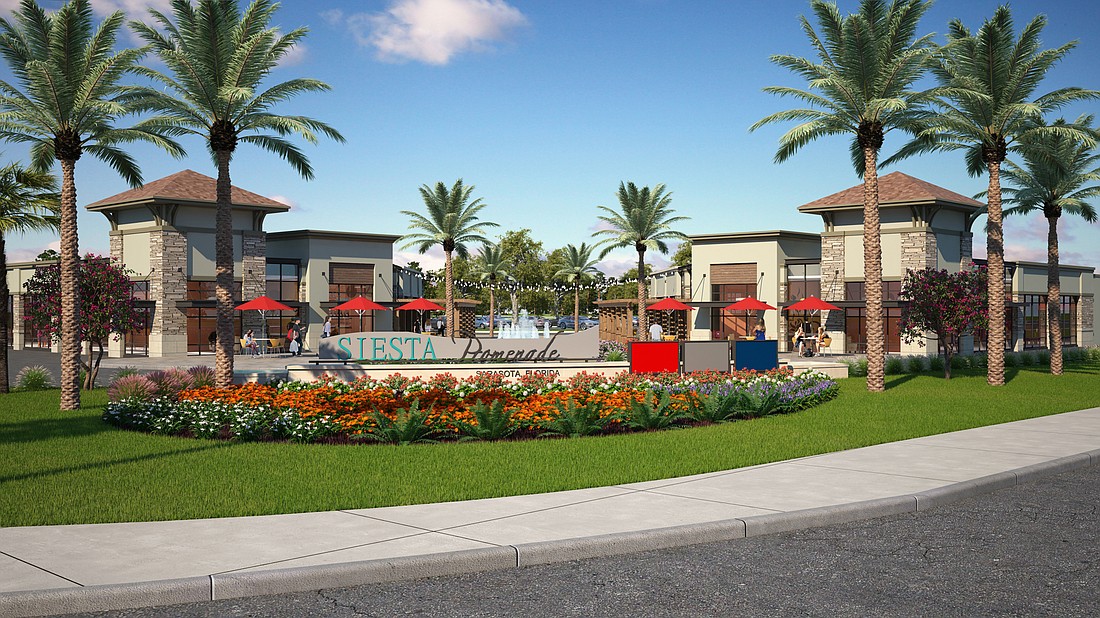- December 26, 2024
-
-
Loading

Loading

Benderson Development Co. LLC has scaled back the scope of its proposed Siesta Promenade project at Stickney Point Road and U.S. 41, but residents remain concerned about the intensity of the plans.
On June 28, Benderson formally filed a Critical Area Plan for Siesta Promenade, a 24-acre mixed-use development near the south bridge to Siesta Key. The revised plans call for 140,000 square feet of retail, 415 residential units and a 130-room hotel.
The retail footprint of the project is unchanged. The number of residences has decreased from 501, and the size of the hotel is down from 150 rooms.
The Critical Area Plan is a designation the county uses for some mixed-use projects, and would allow increased density on the Benderson property. Before the county can consider approving the CAP, Benderson was required to conduct a study regarding the project’s effect on traffic and county services. That information is included with the documents submitted in June.
Benderson’s effort to develop the Stickney Point property began in June 2014. During the past two years, residents have questioned the idea of putting a large development in an already-congested area near one of two access points to Siesta Key.
Sura Kochman is a member of the Pine Shores Neighborhood Alliance and has been a leading opponent of the development. She said the studies published recently have done nothing to ease her concerns.
“The developer, ... after several neighborhood workshops and meetings, has yet to listen to the concerns of the neighborhood and the surrounding communities,” she said. “They are continually pushing for the high density and intensity of use.”
The approved density for the commercial zone Benderson plans to develop is 13 units per acre. To build its proposed 415-unit residential building, Benderson Development needs a density of more than 17 units per acre.
However, this number does not account for the 130 hotel rooms Benderson hopes to build on the property, which County Planner Todd Dary said must be included in the calculation. Including hotel rooms, the density rises to about 20 units per acre — more than seven above the zoning standard.
“It’s not in good faith,” said Kochman about the application. “It’s very misleading.”
After getting feedback about resident concerns, the county required the developer to submit analyses that show the project’s impact on the environment, sewer and water systems, drainage, emergency transportation, schools and libraries, parks, transportation and surrounding areas in general.
Kochman said the 184-page application didn’t acknowledge the impact on the residential neighborhoods nearby, and that traffic studies were not conducted during peak beach-going times.
The application also includes a list of traffic improvements that would need to be implemented by 2024, including signal-time adjustments and the construction of a turning lane and additional traffic signals.
When the proposed scope of the CAP study was brought before the County Commission in January, the board wasn’t eager to approve the development. After hours of public comment against the project, the commission reluctantly allowed the project to move forward, but expressed skepticism about the process and proposed development.
Benderson has argued the residences, even with the density increase, would be less burdensome on the roads than building a purely commercial development. It also said a residential area would better complement the existing neighborhoods.
Todd Mathes, Benderson’s director of development, did not respond to multiple requests for comment. According to the application, Benderson believes the project should be encouraged by the county “for a myriad of reasons ranging from economic to environmental.”
Benderson listed spurred revitalization, increased tax revenue, more affordable housing choices and a “sense of community” and “sense of place” as benefits of changing the land’s zoning.
From here, county staff will review the plan for completeness, which can take more than a month. Then it will be formally analyzed and public hearings will be scheduled for about three months from now.